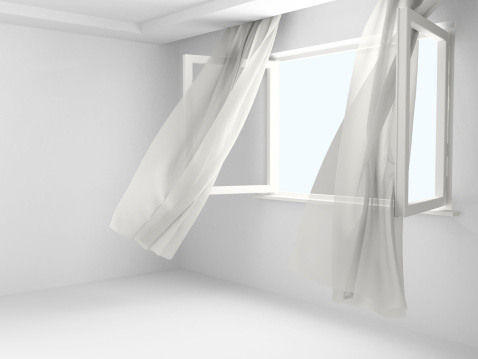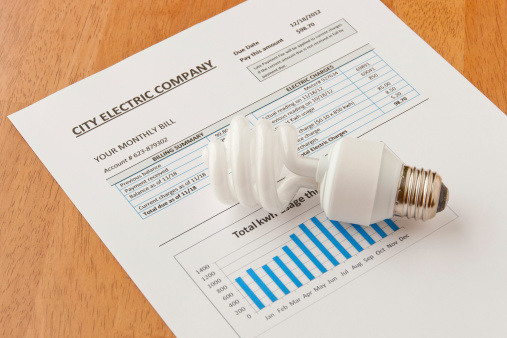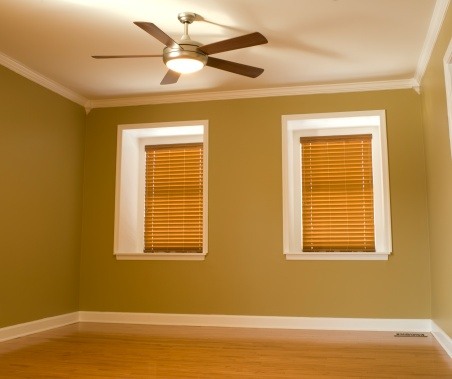 If you're someone who drives with the windows cracked open even on chilly days or nights because you feel invigorated by fresh air, then you already understand one of the benefits of ventilation.
If you're someone who drives with the windows cracked open even on chilly days or nights because you feel invigorated by fresh air, then you already understand one of the benefits of ventilation.
Replacing stagnant indoor air with fresh outdoor air is known as natural ventilation, and if you enjoy it in your car, just wait until you see how it feels in your home. It is one of three ways you can – and should – ventilate your home this summer, beyond the obvious benefit of eliminating stale, stuffy air. No matter how much you rely on air conditioning during the summer, the other benefits of some type of home ventilation system include:
- It will rid your home of indoor pollutants, especially gas from combustion appliances.
- It can create a wind-chill effect, which will help you feel cooler.
- It will reduce humidity, which also will help keep you cool.
- It will reduce moisture that could otherwise lead to mold growth, which can trigger respiratory problems in people and structural problems in your home.
- It can make you less dependent on your air conditioner to fulfill these functions, which will save energy and reduce your electric bills.
In addition to encouraging an influx of outdoor air in your home, you can ventilate your home through mechanical – or spot – and whole-house techniques. To derive the greatest benefits this summer, integrate all three. The best part? They're relatively simple to implement.
1. Natural ventilation
The National Renewable Energy Laboratory notes that “natural ventilation works best in climates with cool summers or cool nights and regular breezes.” If this doesn't bode well for residents of northern California, nothing does.
Cracking open your doors and windows to achieve optimal ventilation might take a little experimentation, but it's worth the time. For example, while it makes sense to create an inlet and outlet for air on opposite sides of your home, the only real area that will be ventilated is the space in between, or from point A (the inlet) to point B (the outlet).
You'll achieve better ventilation if you “force the air to take a longer path between the inlet and outlet,” the laboratory advises. In actuality, this might involve leaving some windows closed, depending on the wind direction on a specific day, your home's exposure and the presence of any outdoor wind breaks, such as trees and hedges. No matter how you negotiate these variables, you can increase air speed by creating smaller openings for the inlets and larger openings for the outlets.
And lest you think that ventilation might be a lost cause on hot or humid days, think again. Try keeping your doors, windows and window treatments closed by day and ventilating your home at night, when temperatures drop. You should feel a discernible difference by simply flushing your home of the warm air that naturally accumulates during the day, especially on the upper level, where the warmest air accumulates.
2. Mechanical – or spot – ventilation
Window fans can bolster your natural ventilation efforts, but here again, a little experimentation might be required. So much the better if you use reversible-type fans so that you can either pull air in or push it out of your home, depending on the direction of the wind. Try placing fans in various windows to see which arrangement is most effective. If you have a two-story home, place one window fan in a lower-level window to bring cool air in and put another fan in an upper-level window to blow warm air out.
Table and floor fans are two other mechanical ventilation techniques, but even they can be somewhat dwarfed by the cooling power of ceiling fans. As Experts In Your Home pointed out in an earlier article, “Can a Ceiling Fan Help Limit the Use of Your Air Conditiioning System” ceiling fans create a wind-chill factor that should allow you to raise the temperature on your thermostat by at least several degrees during the summer without feeling a pinch less comfortable.
Perhaps the most underused of all mechanical ventilation techniques include kitchen and bathroom exhaust fans, which can clear out heat and humidity in a hurry. Keep them running for 15 minutes after cooking, bathing or showering for maximum effect.
3. Whole-house ventilation
Whole-house fans draw air in from open windows and exhaust it through the attic and roof. These fast-moving fans can be incredibly effective as a home ventilation system technique – allowing some warm-blooded people to forgo air conditioning entirely while using the fans in conjunction with window, portable and ceiling fans, even on the hottest days of the year.
Try not to sweat it if your initial attempts at ventilating your home go half right; think of it as being halfway there to achieving greater comfort -- and lower utility bills. Contact us at Experts In Your Home for a consultation and we'll help you go the distance.
Learn more about how Experts In Your Home can help in your home by downloading the free eBook below!








